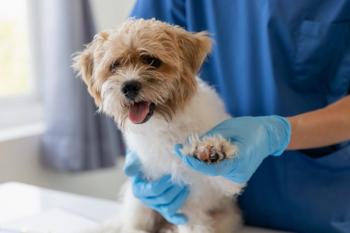
DVMs work with emergency teams as Hurricane Ike threatens coast
College Station, Texas - As Hurricane Ike closes in on the Texas coast, veterinarians aided emergency management teams in evacuation efforts.
College Station, Texas
- As powerful Hurricane Ike bore down on the heavily populated southeast Texas coast Friday, veterinarians and veterinary students working with emergency management teams began to help care for large and small animals at shelters set up to help Texans fleeing the storm's fury and bringing their animals with them.
Bryan-College Station, about 100 miles northwest of the Houston-Galveston metropolitan area and home to Texas A&M University's College of Veterinary Medicine, is one of several inland evacuation hubs in Texas where evacuees can find shelter for themselves and for animals. The veterinary college, along with the Brazos County Emergency Management Team and the Brazos Animal Shelter, worked well in advance of the storm to set up two shelters - one for small animals and another for horses and domestic livestock.
The large-animal sheltering plan is believed to be unique among the Texas evacuation hubs. In a lesson learned from Hurricane Katrina, agencies are no longer able to refuse evacuees bringing their pets with them, but there is no such current mandate for large animals. "Still, the economic impact of losing a prize horse or show animal would be devastating. For this reason, the Brazos County Animal Issues Committee prepared not only for small companion animals, but for larger ones as well," a statement from the veterinary school explains.
As of Thursday night, the large-animal shelter already housed 124 horses, four pigs and two cows. The small-animal unit held 91 dogs, 64 cats and six exotics (four birds and two gerbils). Animals are being sheltered on a first-come, first-served basis.
The large-animal shelter has a limited capacity of 200 horses, 80 cattle and 80 small ruminants and pigs. The veterinary college's Small Animal Hospital and Large Animal Hospital will be available only for emergency care of animals that arrive sick or injured or become so while in the shelters. The hospitals are not shelter sites.
"There seemed to be a big push (at the shelters) last night between 7 and 10 p.m.," Angela G. Clendenin, director of communications and public relations for the veterinary college, tells DVM Newsmagazine. "But it's slowed somewhat today. Quite a bit of traffic, including several horse trailers, passed by us going further inland toward Waco or one of the other evacuation hubs. Even at 100 miles inland, we're still in the storm's path. We're expecting 70-mile-an-hour winds and six to 10 inches of rain," Clendenin says.
"We have 700 people in shelters, all 3,700 hotel rooms here are full and the college's Reed Arena (basketball arena) was opened as a shelter for people with special needs. The entire university is closed."
Ike, which tripled in size in the Gulf of Mexico in the last two days, was a Category 2 hurricane with 105-mph winds at 7 a.m. Houston time Friday. It is expected to hit somewhere along the southeast Texas coast late Friday or early Saturday.
Its path is similar to the 1900 Galveston hurricane that killed more than 6,000 people, the worst storm in U.S. history. If it stays on that track, it would be the first big storm to hit a major U.S. metropolitan area since Katrina swamped New Orleans in 2005. Some forecasters predict Ike could become a Category 3 hurricane (sustained winds of 111 mph) or even a Category 4 (131 mph winds). Its winds already cover an area larger than that of Katrina, officials say.
Houston is the nation's fourth-largest city with 2.2 million residents, and the Houston-Galveston metro area has a population of 5.6 million.
President Bush declared an emergency for Texas, putting 7,500 National Guardsmen on standby. But the metro area and even smaller towns along the coast seem braced for it.
"After Rita, Katrina and Gustav, we're very well prepared all around the state. Things have been well planned and they're working," Clendenin says.
Newsletter
From exam room tips to practice management insights, get trusted veterinary news delivered straight to your inbox—subscribe to dvm360.






